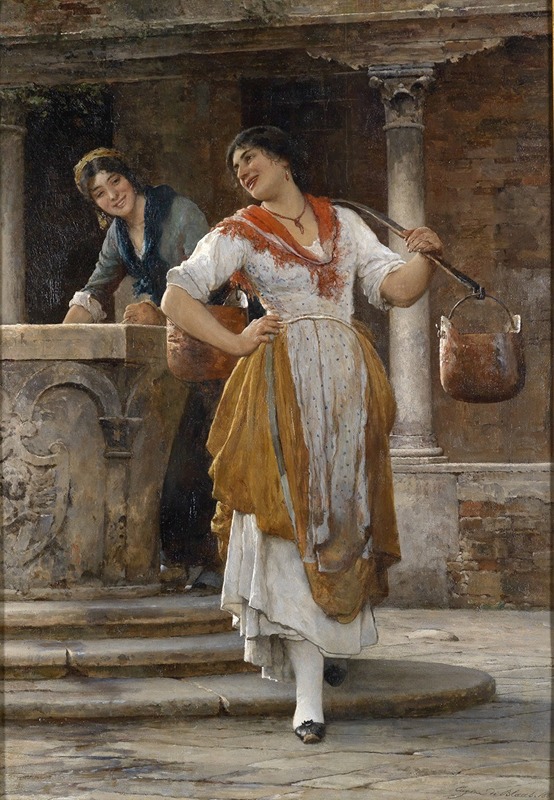
Die Wasserträgerin
A hand-painted replica of Eugen von Blaas’s masterpiece Die Wasserträgerin, meticulously crafted by professional artists to capture the true essence of the original. Each piece is created with museum-quality canvas and rare mineral pigments, carefully painted by experienced artists with delicate brushstrokes and rich, layered colors to perfectly recreate the texture of the original artwork. Unlike machine-printed reproductions, this hand-painted version brings the painting to life, infused with the artist’s emotions and skill in every stroke. Whether for personal collection or home decoration, it instantly elevates the artistic atmosphere of any space.
Eugen von Blaas, an Austrian painter known for his genre scenes, created the painting "Die Wasserträgerin" (The Water Carrier) in the late 19th or early 20th century. Von Blaas was born on July 24, 1843, in Albano Laziale, Italy, and was the son of Karl von Blaas, a noted history painter. Eugen von Blaas is often associated with the Academic style, and his works are celebrated for their technical precision and vibrant depiction of everyday life.
"Die Wasserträgerin" exemplifies von Blaas's focus on capturing the charm and beauty of ordinary people, particularly women, in their daily activities. The painting portrays a young woman carrying a water jug, a common task in many communities during that period. Von Blaas's attention to detail is evident in the realistic rendering of the woman's attire, the texture of the jug, and the serene expression on her face. The background is typically understated, drawing attention to the figure and her task.
Von Blaas's works are characterized by their bright color palette and meticulous attention to detail, which are evident in "Die Wasserträgerin." His paintings often reflect a sense of nostalgia and romanticism, capturing the essence of a bygone era. The artist's ability to convey the subtleties of light and shadow adds depth and dimension to his compositions, enhancing the overall realism.
Eugen von Blaas spent much of his career in Venice, where he was inspired by the city's vibrant culture and picturesque scenery. This influence is often reflected in his choice of subjects and settings, which frequently include Venetian women and scenes from daily life in Italy. Von Blaas's paintings were popular during his lifetime, and he exhibited widely across Europe, gaining recognition for his skillful portrayal of human figures and his ability to capture the spirit of his subjects.
"Die Wasserträgerin" is a testament to von Blaas's mastery of the Academic style and his dedication to depicting the beauty of everyday life. His works continue to be appreciated for their technical excellence and their ability to evoke a sense of warmth and familiarity. Today, von Blaas's paintings are held in various private collections and museums, where they are admired for their artistic merit and historical significance.
Eugen von Blaas passed away on February 10, 1931, in Venice, leaving behind a legacy of artworks that continue to captivate audiences with their charm and attention to detail. His contributions to the genre of Academic painting remain significant, and "Die Wasserträgerin" is a fine example of his ability to transform a simple, everyday scene into a work of art that resonates with viewers.


















